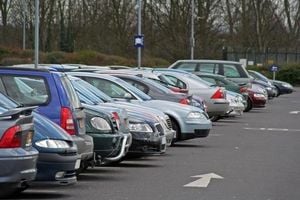India’s economic narrative over the past few years has been one of promising growth, rapid development, and international acclaim as one of the world’s fastest-growing economies. But as the economic corridors echo with concerns and challenges, it appears this burgeoning juggernaut could be experiencing significant strains. Recently, official data revealed India’s GDP growth rate dipped to 5.4% during the second quarter of FY25, marking its lowest point in seven quarters. This downturn has sent ripples of concern through the sectors, raising questions about the future and sustainability of its economic vigor.
Commerce and industry minister Piyush Goyal, addressing the economic challenges during the Times Network’s India Economic Conclave, expressed optimism about India regaining its higher growth momentum. "The initial numbers for this quarter show a pick-up," Goyal said, reassuring stakeholders and citizens alike. He attributed the slower growth to the 'lag effect' caused by the recent elections which he asserted slowed down policymaking and project implementations. With the festive season sparking demand and rural activities reportedly picking up, he hopes this will propel the economy onward.
But underlying these assertions are significant hurdles. The Reserve Bank of India's recent assessment of the economy has been sobering, acknowledging, "the real GDP growth for Q2 was much lower than anticipated." The central bank's projections, anticipating GDP growth at 6.6% for this fiscal year with gradual increases through the next quarters, reflect cautious optimism amid uncertainties on the global stage.
Sanjay Nayar, President of the Associated Chambers of Commerce and Industry of India (ASSOCHAM), emphasized the urgent need to address challenges to fully realize India’s Foreign Direct Investment (FDI) potential. He mentioned, "Reducing the GST on essentials can stimulate consumption," hinting at policy reforms necessary to invigorate the economy. Goyal also recognized the role of infrastructure investments and vibrant banking activity as catalysts for reviving economic momentum.
Economists are also weighing the external pressures from global markets and geopolitical tensions, which invariably impact domestic economic health. V Anantha Nageswaran, the Chief Economic Advisor, underscored the importance of becoming resilient through domestic efforts. He detailed several strategic drivers necessary for driving sustainable growth, targeting productive employment, addressing skill gaps, maximizing agricultural potential, and enhancing manufacturing capabilities through deregulation.
The increasing cost of borrowing and persistent inflation are stirring public worry, making each grocery trip feel like an expedition. Households curtailing expenditures as wages stagnate is sending ripples through various sectors, from real estate to consumer goods. Prices for essentials keep ticking upwards, testing the resilience of Indian households and their spending capacity.
Adding to the confusion, the government faces mounting pressure to achieve its fiscal goals without sacrificing growth. Reports speculate on whether India can hold onto its targeted fiscal deficit of 4.5% of GDP by the 2025-26 deadline. The vision for India as the world’s fifth-largest economy hinges on its ability to balance fiscal responsibility with the pressing economic needs of its populace.
Critics have called for urgent action to remedy the root causes of economic malaise. Goyal maintains, "The way banks are now seeing traction back again, the way infrastructure spending has come back on track," pointing to signs of renewed investment enthusiasm and confidence by the financial sector. There’s hope yet to navigate these turbulent waters and emerge stronger.
While India’s economic projections suggest potential recovery, the weight of international competitiveness and domestic consumption webs together forms India's economic narrative interlaced with both risks and opportunities. Policymakers now stand at the crossroads of historical precedence, deciding how to steer the country forward on its growth pathway. If successful, these endeavors could entrench India’s status as not just the fastest-growing of major economies, but also resilient against future shocks, where the full upper echelons of economic potential could be unlocked.
The global economic sentiment is equally cautious. Recent discussions around two Free Trade Agreements (FTAS) with the UK and EU highlight the urgency and complexity entangled with global economic integration. Goyal emphasized, "Both sides are aiming for balanced, ambitious, and mutually beneficial FT agreements," illustrating how integral trade matters weave through India’s economic strategies. Negotiations demand deft handling to mitigate any potential adverse impacts from imposed regulations tied to sustainability, underscoring varying development trajectories among nations.
While infrastructure development continues as the foundation of economic revival, the socio-economic reality for the everyday Indian remains strained. The interdependence of economic growth with improving livelihoods requires comprehensive and pragmatic solutions, touching every facet of the economy. With India's roaring digital economy readily observable, restructuring economic policies emphasizes necessity over strategy to rekindle the flames of growth amid the challenges of data accuracy and accountability.
And as policymakers deliberate the finer points of fiscal strategy, the onus remains on facilitating not just growth, but equitable growth. The populace expectations rise, demanding fulfilling jobs, ample purchasing power, and stabilization of everyday life. Only time will tell if India can navigate through fluctuated tides and emerge onto stormier shores as the economic giant it seeks to be.



